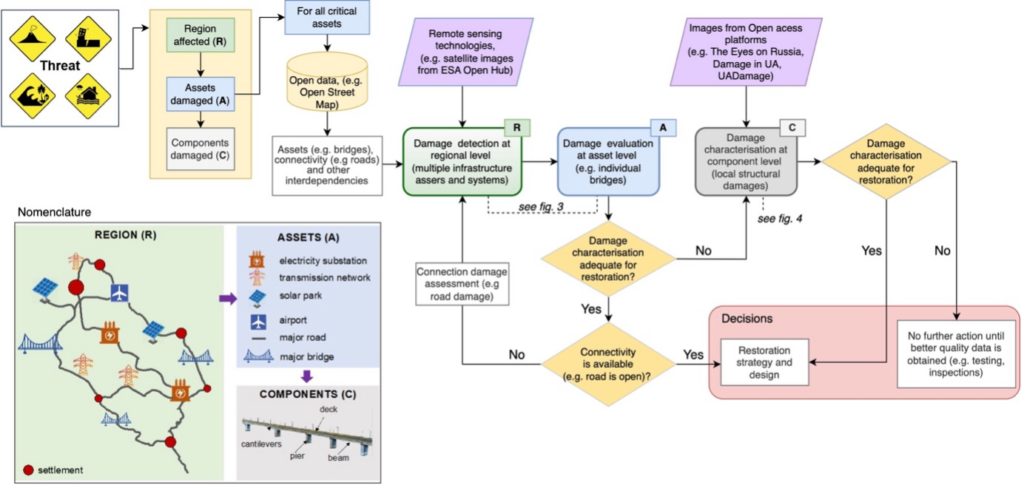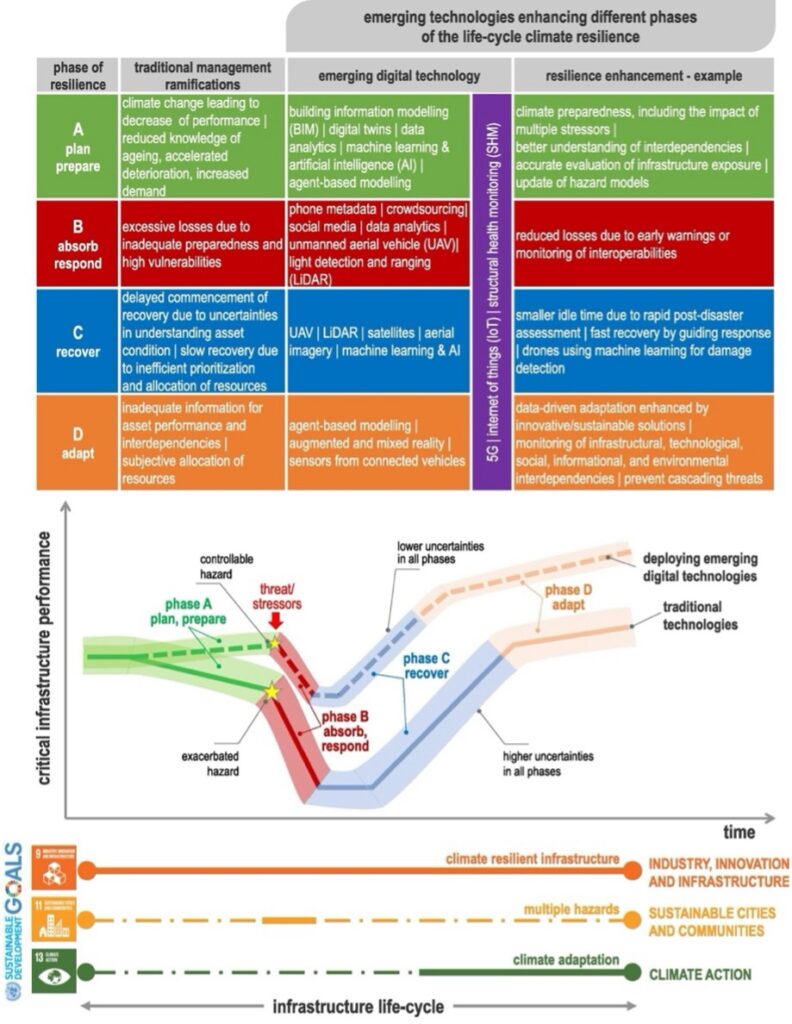SDGs supported:

Modern cyber-physical systems within technology-enabled city and critical infrastructure ecosystems are highly complex, yet lack robust tools for integrating and analysing large volumes of heterogeneous data from sources like audio, video, social media, sensors, and Earth Observation technologies. These gaps hinder real-time identification of hazards, faulty events, and stressors, limiting the ability to infer actionable response plans on-the-fly.
To address these challenges, we develop novel AI-driven, real-time solutions that seamlessly integrate multimodal data for enhance risk detection and resilience assessments. By leveraging technologies such as GPS, InSAR, IoT sensors, and Synthetic Aperture Radar imagery, combined with fit-for-purpose AI, ML ensembles, and dynamic digital twins, we provide rapid infrastructure damage assessment for more efficient resilience strategies.

Kopiika et al. (2025): https://doi.org/10.1016/j.autcon.2024.105955
Our approach to AI- driven digitalisation
Advanced data integration and analysis
We integrate multimodal datasets from disparate sources to create a unified data ecosystem. Leveraging tools like GIS, digital twins, and monitoring systems, our approach optimises data utilisation for actionable insights. Our methodologies, include new deep learning (DL) and machine learning (ML) methods, address challenges of big and small data, ensuring scalability and precision.
Innovative monitoring and predictive technologies
We deploy monitoring systems that utilise IoT devices, satellite imagery, and AI-powered algorithms for predictive analytics. These systems provide operators with real-time insights, enabling proactive infrastructure management. Our expertise in point cloud processing, digital twins, and data fusion fosters a comprehensive understanding of asset conditions, ensuring sustainable and resilient solutions for complex cyber-physical systems.
AI-driven digital twins for infrastructure
We develop AI-driven digital twin platforms to revolutionise the monitoring and management of smart city applications, built ecosystems and critical infrastructure. By integrating diverse datasets such as point clouds, satellite imagery, and IoT sensor networks, we enable situational awareness through real-time data fusion and advanced predictive modelling. Our use and development of AI/ML, generative (GenAI) and explainable AI (xAI) methods ensures proactive decision-making and enhances resilience against hybrid threats.
Ethical and explainable AI for crisis management
Our AI frameworks facilitate real-time crisis management. By employing xAI and generative AI, we provide transparent responses to hazards, whilst safeguarding privacy and EDI principles.

Argyroudis S, Mitoulis SA et al. (2022): https://www.sciencedirect.com/science/article/pii/S2212096321001169
Impact
Our research empowers decision-makers and operators with real-time, AI-driven tools to enhance situational awareness to enhance resilience of smart urban environments and critical infrastructure against diverse hazards and cascading failures. The outcomes of our research and consulting contribute to safeguarding global economies and societies, fostering sustainable and resilient urban ecosystems.